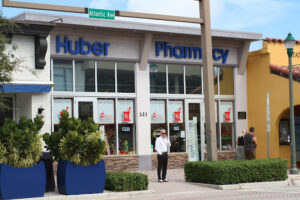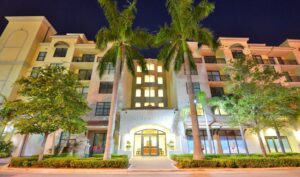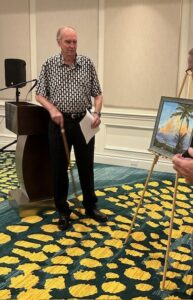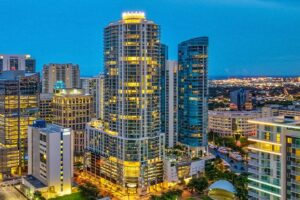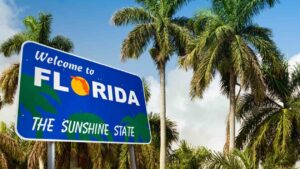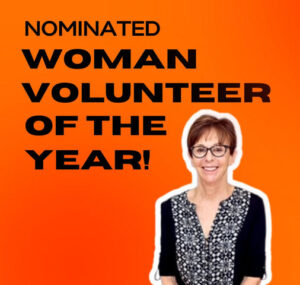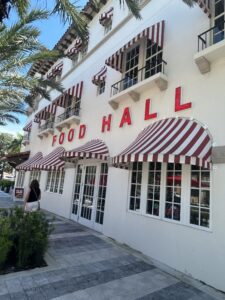
The Block 40 Food Hall In downtown Hollywood.
We took a brief staycation recently after a hectic few weeks and I have to say it does your soul a favor to take a break from it all. Even for a day.
We went to Hollywood Beach, a 45 minute drive from Delray and spent a day and a night at the Diplomat Resort on the ocean.
It’s fairly reasonable this time of year, despite the $17 drinks.
Hollywood is an interesting city with “good bones” as they say courtesy of its visionary founder Joe Young. There’s a walkable downtown, a magnificent beach and a few traffic circles that will keep you on your toes if you’re driving.
We checked out the new Block 40 Food Hall, a good example of adaptive reuse. The food hall occupies the building that once housed the historic Great Southern Hotel, built by Young 100 years ago to house workers who were building his dream. If you’re a film buff, you may recognize the hotel from its appearance in “Midnight Cowboy.”
We dined at Lux Burger, watched Delray’s Coco Gauff play at the U.S. Open and then took a walk around town.
My wife Diane was a young planner who worked for the City of Hollywood at the start of her career so it was interesting to hear her talk about the changes that have occurred since the 80s.
There’s lots of development happening in Hollywood—high rises..a very different vision than Delray’s.
I like our scale, but there’s room for different styles and visions.
I believe cities need their own visions and “positioning” so to speak. Variety is truly the spice of life. It’s nice that South Florida has a wide variety of cities.
I’ve always been fascinated by Hollywood, Pompano Beach and Lake Worth Beach…Boca, Fort Lauderdale and West Palm too.
I see those cities as places with lots of potential. It’s been interesting to see their progress or lack thereof. It’s been interesting to see the changes that have occurred since I discovered these cities after moving to South Florida in 1987.
I like cities that have “grids”, traditional downtowns, lots of amenities and natural gifts such as beautiful beaches or lakes like Lake Ida. Lake Ida is so underrated.
Which in a roundabout way, brings me back to Hollywood.
We spoke to a bartender who lives downtown and she thinks the city will become the “new” Miami.
Maybe. I don’t know.
I don’t know enough about the politics to understand the contours of Hollywood’s aspirations.
But walking around the downtown I felt the potential, but also saw the challenges of creating a vibrant downtown.
It’s not an easy endeavor.
There are some formulas—events to bring people downtown, accessible parking, decorative street lights, culture, a good mix of restaurants and retail—but you need some magic too. You need some chemistry: I can’t quite explain it. But I have seen it!
Delray managed to make it happen—the result of a lot of years, a lot of investment and a lot of people rowing in the same direction and taking risks.
Sometimes those risks work, and sometimes they don’t. But if you learn from the experiments that fail, you’ll find a way forward.
Years ago, when Delray was striving mightily to revive the downtown, someone —I can’t remember who— said something that stuck with me.
“Downtown will never be done.”
In other words, you can’t ever declare victory; you have to keep at it.
It’s a simple statement but profound nonetheless. There is a tendency to get complacent when you achieve a certain level of success.
But you can’t. Complacency is a killer. In every aspect of life.
The second statement I remember from those days was that “downtown is the heart of the city, without a healthy heart, the city will struggle.”
How true.
The third statement from that era I can attribute to retired City Manager David Harden. He told us that our biggest challenge would be surviving success.
Truth is, I wasn’t sure what he meant at the time. I thought success would breed more success. And it does, for a while.
But success can also breed complacency and contempt. How much is too much? What fits and what doesn’t?
Does the success include everyone? Has the success priced out people who want to live here or who do live here and may be forced to leave?
I believe change is inevitable and can be healthy. I also believe that change is never easy or straightforward.
How do you change and keep your soul? How do you aspire and ensure that you are inclusive?
All of these thoughts flooded my mind as I looked out at the ocean from our room at the Diplomat.
The last time I was here, I was a mayor attending a League of Cities convention or was it a Florida Redevelopment Association meeting? I don’t remember.
But I’m still thinking about those very same questions. Still wrestling with the riddle of cities. Still fascinated about what it takes to succeed and what the definition of success for a city actually means
